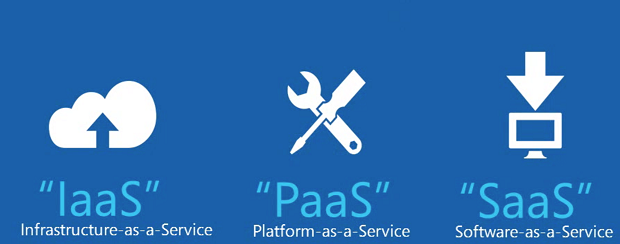.png?width=368&name=Cloud%20Carib%20150%20x%20330%20px).png) Changes to the technology landscape, the evolution of bad actors, and the impact of the global pandemic have meant that scores of organizations across multiple verticals have become more concerned about where they store critical information and the steps, they take to protect that data.
Changes to the technology landscape, the evolution of bad actors, and the impact of the global pandemic have meant that scores of organizations across multiple verticals have become more concerned about where they store critical information and the steps, they take to protect that data.
For many entities, this has meant a move to the cloud. To fully grasp the concept, it may be useful to compare Cloud Computing to an actual cloud. While physical clouds are made of clusters of water molecules that create balls of white fluff in the sky, the digital cloud is a dense cluster of computer systems working together as one giant computing resource.
Whether you realize it or not, most of us use cloud computing all day long. With each Google search, the computer at your desk communicates with hundreds of clustered computer systems across the globe to dig up your results and send them back to you at lightning speed. Creating documents over the internet is another simple example of cloud computing. Many of you have used Google documents to create a spreadsheet or presentation. If you have, then you have been using the tech giant’s cloud computing resources.
Traditionally, cloud computing can be made available to you in three ways: Infrastructure as a Service, Software as a Service, and Platform as a Service.

Infrastructure as a Service (IaaS):
This method requires you to purchase access to raw computing hardware from a provider over the internet, such as servers or storage. IaaS can be used by businesses to develop cost-effective and scalable IT (Information Technology) solutions that also provide location independence so that all you need is an internet connection. A major advantage of IaaS is that in situations where the scale of a client’s operation fluctuates or requires expansion, Cloud resources can be used instead of purchasing, installing, and integrating the hardware itself.
By now, you are wondering how best you can incorporate IaaS into your business process? Here are some examples to consider:
- Enterprise infrastructure: businesses that desire to expand can tune their infrastructure to reflect their growth and use private clouds (which are accessible to only the said business) to safeguard the storage and transmit and store sensitive data.
- Cloud-hosting: A cloud-hosted website can benefit from the redundancy occasioned by numerous physical servers, which helps in dealing with unexpected demands on the website.
- Virtual Data Centers (VDC): VDCs can be harnessed to provide optimized cloud-hosting capacities or enterprise IT infrastructure.
Software as a Service (SaaS):
Perhaps the most popular of the three cloud computing options is Software as a Service (SaaS). As a cloud-based model, it allows all the maintenance work of software including updates, delivery, improvisations, etc. to be executed by the operating organization. Using web-based SaaS apps allows members of your team to access data by simply logging in. Like IaaS, it also offers location independence by eliminating the need to have data stored on a specific computer’s hard drive. Instead, anyone with an internet connection and authorized login credentials can work on projects from where they are. Microsoft SharePoint and Google Docs are great examples of this; users can opt to pay subscription charges on a monthly or yearly basis. In the face of the current global pandemic and the need for social distancing protocols, these SaaS applications have grown enormously to cater to the needs of remote working teams. For small and medium-sized businesses, SaaS solutions provide an opportunity to offer better services and be more competitive along with other benefits.
Platform as a Service (PaaS):
This cloud computing model allows a third-party provider to deliver hardware and software tools to users over the internet and does not require developers to install in-house hardware and software to develop or run a new application. A PaaS provider hosts the hardware and software on its own infrastructure and is widely touted for their convenience and simplicity. While PaaS will not replace a company's entire IT infrastructure for software development, its easily deliverable through public, private, and hybrid clouds. Users will normally have to pay on a per-use basis. An organization may find the move to a PaaS compelling considering potential cost savings over using on-premises alternatives.

Simple as 1...2...3...4
For those who have yet to make the jump to the cloud environment, the thought of migrating your entire company infrastructure to the cloud environment can feel like an overwhelming task. However, breaking the process down into smaller and more manageable segments can make the process easier for your entire team.
STEP ONE: Establish Your Why
With input from your entire team, establish your company objectives. For example, does your organization need to improve collaboration? Is your goal to reduce costs? Do you need to increase scalability or leverage real-time data and analytics to attract more clients? How will a move to the cloud environment help your team meet those objectives? Remember, your goals and objectives will help inform the decisions surrounding your cloud migration processes, so be specific and clear about your needs.
STEP TWO: Assess Your Current Environment
Now that you’ve outlined your objectives, the next step is a detailed analysis of your current environment. Take stock of your infrastructure to determine not only WHAT technology you use but HOW your organization uses certain tech. This will further help your team decide on the best cloud environment for your business.
STEP THREE: Choosing the Right Vendor
With your objectives and assessment in hand, it's time to choose the right cloud platform. This decision As the regional leader of cloud services, Cloud Carib offers a variety of cloud facilities from virtual data centres, network centres, and managed services to make your migration process a pain-free experience.
STEP FOUR: Create & Execute Your Migration Plan
Your migration plan should outline exactly how you plan to extract, transform, and load your data to the cloud. You may opt to have your chosen vendor create and execute this plan. On the other hand, if your in-house team is adequately equipped, you may decide on a more hands-on approach using the data obtained from your assessment. Whatever your choice, be sure to back up your data before you begin migration. Testing at various points of the data migration is also an important step toward ensuring that no data is lost or misrepresented.
Conclusion
Now that your cloud environment is set up to your specifications, the application(s) are in the cloud and data has been populated, you’re now ready to flip the switch and begin using your cloud environment. Remember, even the most sophisticated cloud systems require maintenance and monitoring. Cultivating a strong relationship with your vendor can make the process easier to manage while creating more time. It also allows you to deploy more resources needed for your organization to meet its growth targets.